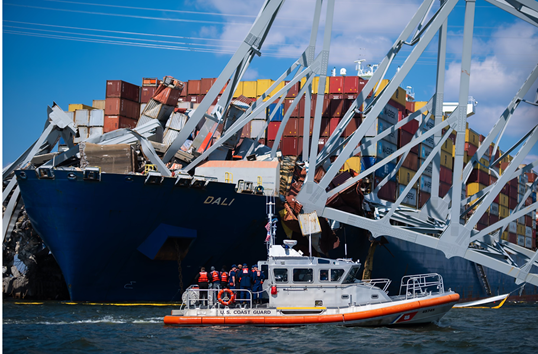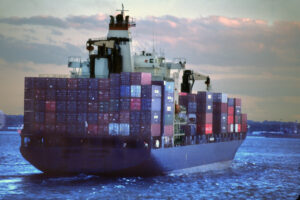Norway’s car carrier operator Wallenius Wilhelmsen is minimizing the effect in its operations after the suspension of all vessel traffic into and out of the Port of Baltimore.
The giant shipowner on Wednesday said that “the suspension of all vessel traffic into and out of the Port of Baltimore until further notice has obvious implications, both operational and financial for the company.”
Baltimore is a key hub for Wallenius Wilhelmsen, and the terminal handles a significant volume of imports and exports of cars and heavy equipment to and from North America.
However, the owner claims that through cooperation with various port authorities, partners, and stakeholders to provide alternative solutions, is “minimizing the effect this unforeseen situation is having upon our employees, customers, and ongoing operations.”
“We have estimated that the aggregated provisional total financial impact on EBITDA of the situation is in the range of 5-10 USD million, assuming the disruptions last for up to a month. This considers both the reduction of logistics operations in Baltimore, Carmen being unable to exit the port and other disruptions to our shipping operation. The financial effects have been mitigated by significant efforts of Wallenius Wilhelmsen staff of rerouting cargo to and from other US terminals,” Wallenius Wilhelmsen said in an update in its website regarding the Francis Scott Key Bridge collapse.
“The terminals in Baltimore Port are open to road traffic and are fully operational, as are our processing centers despite vessel operations being suspended. Cargo on the water bound for Baltimore is currently being re-routed to other US ports such as Newport News, Newark, and Savannah,” reads the company’s statement.
As it is reported, its vessel M/V Carmen is still at berth in the port awaiting clearance to sail once the channel reopens.
Planned cargo operations were completed at the port prior to the bridge collapse and the vessel and crew are ready to sail as soon as the channel is reopened.
There are no verified estimates for when the channel will reopen again. The shipowner, as it is explained, currently expects the closure to last for weeks and has based the impact estimates on that assumption.
“Once open, we anticipate the terminal will also promptly resume normal cargo operations as vessels begin to make port calls as previously scheduled. There is of course risk of delays to the anticipated reopening, or unforeseen challenges in the salvage operations,” Wallenius Wilhelmsen added.
Source: Wallenius Wilhelmsen



